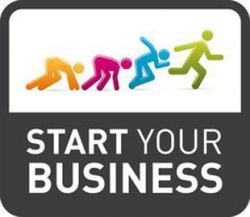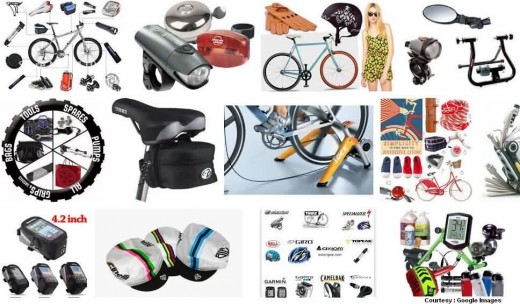Starting a retail business with little money

4 Year Plan to Start a Small Retailer with No Funding
Everybody can be an entrepreneur. You don't need big bucks to start your business, but you do need a great idea, some planning and lots of perseverance.
This 4-year plan will get you from nothing to a small retail business without mayor investments, no partners and no banks!
All you need is time, commitment and a small amount of startup cash (depending on your target market). There are no required skills and anything you'll need in the future can be learned or outsourced.
Finding your target product & market
The first step is also the most important one.
You need to sell a product, or a range of products. Finding the right range & market is key in our success.
This 7-year plan aims for small retail shops that service a local market. The plan works with any kind of product, but you need to be passionate about it.
- Find a product that can be sold at events, tournaments or through booths at local fares or product with high local demand but limited (or online only) supply.
- Search for opportunities in your own activities.
For example, you might be a member of a local sporting club or you participate in a monthly cycling tour between friends.
- Identify products that have a high demand in the local area.
For example the cycling tour requires participants to have replacement tires, every month 3 or 4 people use one.
If you have identified your product and market (for example the cycling tour) you should check if there is any competition (for example, someone else selling new tires would make it hard to enter the market).
Once you've found a product without competition an initial market you can start the next steps.
First steps into retailing
For the rest of this hub, we'll take the monthly cycling tour with friends as our example market and spare tires as our initial product.
Besides the legal steps (registering for a company etc), the first step is now to get a good amount of stock of your initial product.
In our example, the cycling tour is with 50 people and you have identified that on average 3 to 4 tires are needed each trip.
Say a shop would sell the tire for €5, the hassle for someone to get 1 tire is high.
Usually the retail price of products is about twice the purchase price. So you should be able to find those tires wholesale for maybe €3. Stock 10 tires (€30 investment) and test your market.
The next monthly tour, you can offer the tires at the location of the tour for the same price (or even a bit higher). Most people will get them directly from you (even more if they know you). 3 tires sold = €6 profit.
If people are willing to buy from you, you're ready for the next step. If not, you might be better to return to step 1 and find another market and product.

Expanding the product range
In our example. You would have invested €30 for 10 tires, tested selling them for maybe 2 months and having sold only 6.
Money wise, you'd have invested €30, sold for €30 but still have a stock of 4 tires.
Obviously, selling 3 tires every month is not going to make you rich. But this is the testing area, it's now time to expand.
Identify 10 to 20 more products that you'd be able to sell to the same market.
Example are obviously different bicycle parts or even complete bikes. Other options are additional services like offering to revise an entire bike before each trip.
Depending on the price of a product, you should stock up the amount you could sell each month (+ some margin) with a minimum of 1 item.
Don't go overboard here. You can do a quick calculation on how much money your target market is worth each year.
In our example, the 50 friends spend on average € 200 / year on bike stuff. So the market is € 10 000 / year.
Considering you will not have everything they buy, you should maybe stock € 1000 worth of product.
Each month, take a look at what sold and what did not. You should replenish stock that is empty or even take in new products and discard others that don't sell.
1 Year Evaluation
After about a year you should have a firm foothold in your local event. You'll be known as "the man to go to" for that local market. The sales might be jumpy, sometimes you make a good amount of sales, sometimes you don't, that's not a problem.
The main thing to evaluate is the evolution. If sales continue to grow, more and more people get to know you as "the man with the goods" and you are enjoying the time all is fine.
If on the other hand people are starting to get annoyed by your presence, you find the organizers rather not have you around or people generally buy elsewhere, it's time to get rid of your stock and start over from step 1.

Second year dip and market expansion
By the second year, you should have about 10 to 20 popular items in stock with 1 local market. Your stock is worth about €1000 and you are ready to expand our market.
You know your 10-20 items will sell to cycling enthusiasts, so that's where your next market should be found. Perhaps a local cycling event with 500-1000 participants.
Contact the organizers and ask if you can setup a booth. They will probably require you to pay a fee.
It's important to calculated your potential earnings to see if it is worth it.
Say you sold € 200 of goods each month to your group of 50 people. Then you can expect to sell €4000 of goods with 1000 participants. Adjust this value if you have some competition.
€ 4000 of sales will result in about € 2000 of profit.
Obviously, before you can sell € 4000 of items, you need to have them in stock. Increasing stock amount can be done gradually. First attending events with 100 people, then 200, 300, etc ...
This usually takes 2 to 3 years to fine tune and get your stock levels up if you have no money to invest (you only invest the profit of earlier sales).
Starting year 4, you'll have 10-20 products, about a € 15 000 stock, selling at 10-20 events with total sales of about € 40 000 - € 80 000.
At this point you have completed the goal of starting a retail business with little money.






